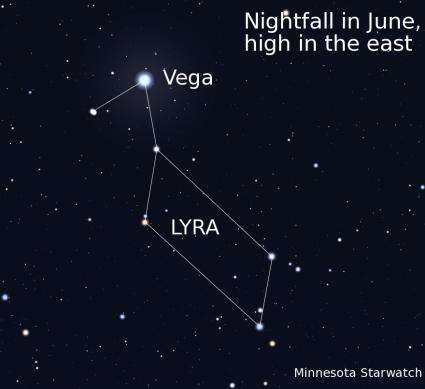Points North: Important Moose Questions Remain Unanswered
-
Sun, 10/17/2010 - 7:43pm
Tweet
| Attachment | Size |
|---|---|
| Finalcut_PN_20101015.mp3 | 5.73 MB |
If Minnesota moose are declining due to a warming climate, why are they still sighted with some regularity at the very southern edge of their range in the state, in places like southern Itasca, southern St. Louis, Aitkin and Carlton counties?
Is predation by wolves and black bears playing a role in the Minnesota moose population decline?
How has the increased deer population affected moose in northeastern Minnesota and adjacent Ontario?
Currently, there are no answers to the above questions, says Ron Moen, a wildlife biologist and moose researcher with the University of Minnesota’s Natural Resources Research Institute in Duluth. Moen is involved with moose research projects in Voyageurs National Park and on the Grand Portage Indian Reservation. He started a website last year where the general public can report moose sightings and their locations. So far, over 700 sighting reports have come in.
Although the website’s sampling is not random, and there is the chance that the same moose could be reported more than once, and sightings aren’t independently verified, Moen still thinks the sightings database is useful. It leads him to ask questions, the answers to which may help scientists understand Minnesota’s mysterious moose decline.
About all we know now is that most observers believe moose in the northeast have declined significantly, following a precipitous decline in the northwestern population. Officially, the Minnesota DNR attributes the loss of moose to global warming, though not all moose experts agree with that assessment. Some point to a historic correlation between deer and moose, where moose numbers drop as deer increase, because whitetails transmit parasites and disease fatal to moose. And no one has ascertained whether predation, either by natural predators such as wolves or by human hunters, is limiting the moose population.
Right now, we also know the numbers don’t look hopeful for northeastern Minnesota moose. While state and tribal wildlife managers continue to count enough moose in annual winter helicopter surveys to continue their annual hunts, researchers have found adult animals suffer significantly higher nonhunting mortality than they do elsewhere within their North American range. They also found a low and still-declining number of cow moose accompanied by calves, which stay with their mother during their first year.
Does this mean Minnesota moose are fading away? Maybe or maybe not. New data added to Moen’s website where the public can report moose sightings shows the animals turn up throughout northern Minnesota on a regular basis. While he points out this does not mean there is a large number of moose in southern Itasca or Aitkin counties, they continue to exist along the southern fringe of their Minnesota range.
“It makes you wonder about moose mortality and how it relates to the weather,” Moen says.
He hopes to follow up with DNR area wildlife managers and learn what they hear and observe regarding moose within their work areas. Elsewhere in North America, such as in North Dakota and New England, moose are expanding farther south, even though the climate is warmer than here.
Moen also thinks researchers should take a closer look at the role predation plays in moose mortality. Public reports on the website for 2010 indicate people are seeing cows with calves at a significantly higher rate in summer than the cow/calf ratio reported in the January aerial survey. Which begs the question—how are moose calves lost during the intervening months?
“I think we have to consider predation as part of the cause for higher mortality,” Moen says.
Two northwoods animals known to prey upon moose are wolves and black bears. Wolf packs can prey upon both young and adult moose. Black bears are known to prey upon moose calves during their first weeks of life. What isn’t known at present is how much predation occurs or when it occurs in the moose life cycle.
New moose research may shed some light on this topic, though the projects are designed to learn more about their day-to-day activities. Moose in Voyageurs National Park and on the Grand Portage Reservation were captured and outfitted with radio collars to monitor GPS locations and air temperatures every 15 minutes so biologists can learn more about moose activity and habitat use in response to weather events. The same information could provide insight into calf mortality, if it is occurring. A moose with a young calf generally stays in a relatively small area. If a cow moose begins moving around during the weeks after it gives birth, it could indicate she lost her calf.
While this won’t answer the question of whether wolf mortality is a factor, Moen, and some other biologists, believe this politically sensitive subject can’t be ignored.
“I don’t think we should say wolves are a problem without data, but we need to do research and find out more about the extent of wolf predation,” he says. “We know wolf numbers have increased over the last 30 years, but we don’t know if they are taking enough moose to have an effect on the population.”
In order to learn more about moose, he hopes to get collars on more animals. A new radio collar study is planned just north of the Canadian border in Quetico Provincial Park. With projects from Voyageurs to Grand Portage, and Two Harbors to Quetico, there will be collars on moose throughout the entire core northeastern range, except for a “hole” along the Gunflint Trail—which appears to be the present stronghold for Minnesota moose.
“The Gunflint country has cooler weather and lots of moose sightings,” he says. “If moose eventually leave Minnesota, this will be the last place they’ll remain.”
Hopefully, it won’t come to that. But unless we are willing to seek answers to the hard questions—including the topics of predators and hunting—we are not doing everything necessary to ensure Minnesota moose survive.
Airdate: October 15, 2010
Tweet






